How to List Publications on a Resume or a CV
Wondering how to list publications on a resume? Your resume is designed to be a place to brag about yourself and share accomplishments.
While you need to keep it short and sweet, you also want to list things like written publications, academic research, and other notable achievements.
Check out this simple guide to know just how to list academic publications and other similar items on your resume.
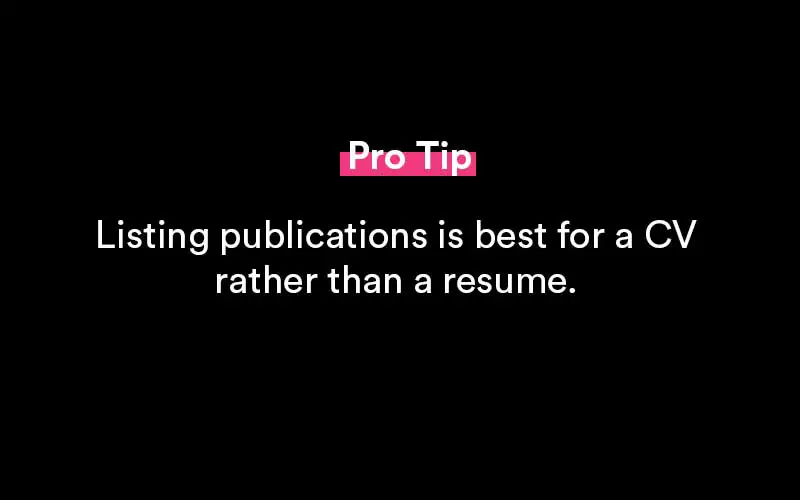
What's a CV?
CV stands for curriculum vitae. If you have curriculum vitae to share on your resume, you will most likely be aware.
What curriculum vitae or CV means is that you have a document formed to showcase your accomplishments on both an academic and professional level.
Curriculum vitae can be attached to a job application or resume in order to share specific knowledge and expertise.
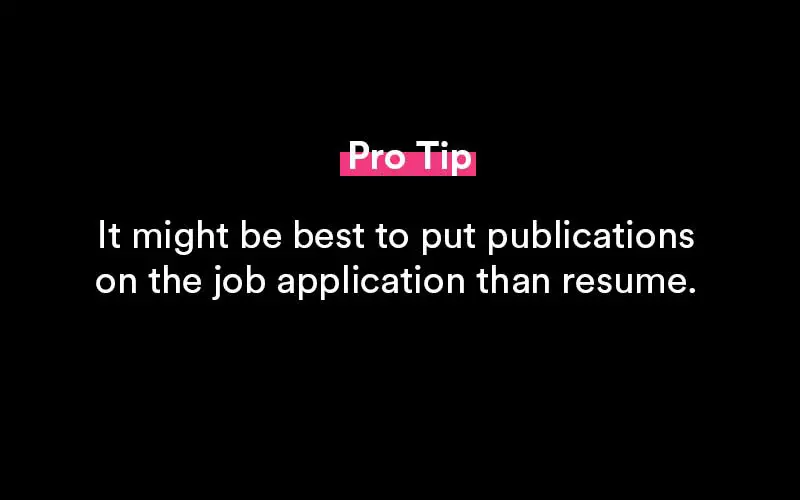
The CV can include but is not limited to the following items.
- Personal information.
- Education.
- Work experience.
- Honors and awards.
- Skills.
- Writing publications or presentations.
- Professional membership.
CV is very similar to a resume by design but is far more specific and is created in a very organized manner at all times.
These are common used in a scientific profession or perhaps a field that is extremely knowledge and experience specific.
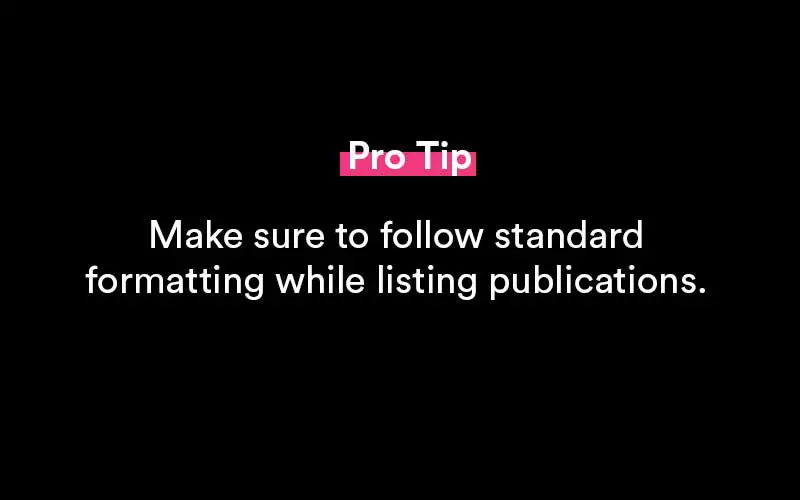
Why is it important to list publications on a CV?
The reason you would use a CV rather than a resume for this type of listing is because a resume simply doesn't include the details.
Most resumes are formatted to be specific and simple but a CV holds the details.
Listing your publications is what gives you the chance to be set apart from the competition.
If you want guaranteed job interviews, don't skip a listing. You want a fully detailed publications section on your CV to tout your accomplishments for review.
This can be used for things like research papers or publication publishers. The key is that you are sharing your writing or publicized work.
You will want to be sure to share recently published work but other items will still be listed as well.
What publications should be included?
When you include publications on your resume, you will want to choose carefully.
While you can include anything and everything that properly displays your writing style, you may want to pick and choose the best things to share.
The publications that you include really may depend on the job title you are seeking with your efforts.
Publications of any kind are listed in order to give you credibility for a position.
For example, a copywriter or a similar position like marketing professionals would present articles or websites. These articles may be peer-reviewed or they may not be but they display your skill and typically a publication date as well.
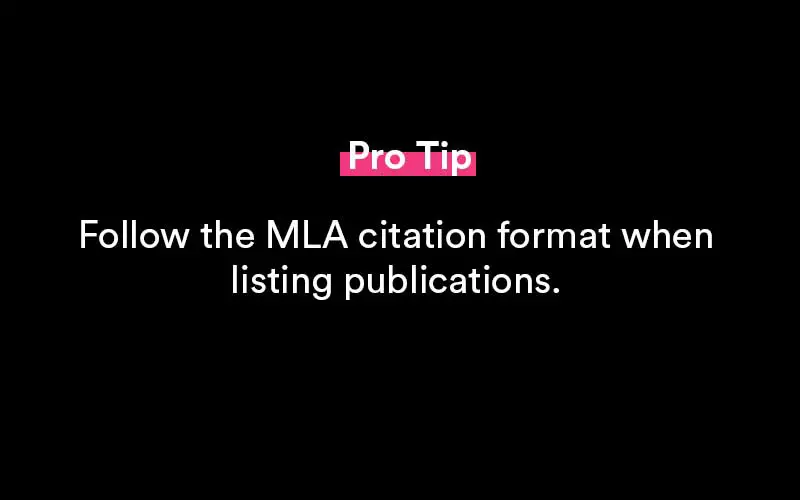
A website like this may not always be a suitable publication. It really depends on what you are submitting for.
Here's another example. An academic CV, or a CV for some form of academic position, a website probably won't do.
In this case, you will want a journal title, book title, or something that has been through a peer-review process. Think of published works or APA style scholarly materials in this scenario.
How to list publications on resume
If you're filling out a resume but want to list a recent publication, you need a separate resume section in order to do so.
This would most likely be a three-page resume format with a publications section to detail some of your publication titles.
While a CV is designed to share publications and academic papers, a job application may be better suited to simply adding a separate section to your resume instead.
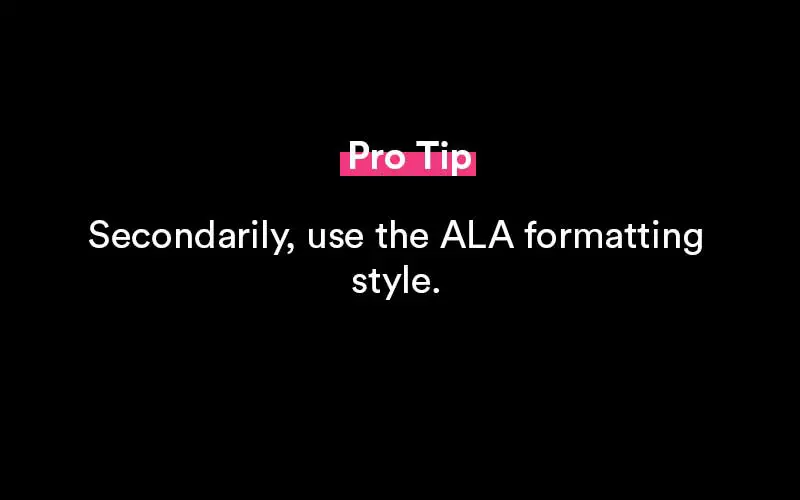
If you have publications, list them on the resume.
Here are some tips you can use as you create a publication list template for a separate section of your resume.
Format your list correctly
The list that you include on your resume needs to be properly formatted. This will immediately catch the eye of any reviewer.
Whether you non-peer-reviewed publications, press publications or industry journals, you need to format them.
Always cite publications using APA stylebook Garcia or MLA style book Terry. APA style or MLA style are both acceptable but choose one or the other and be consistent. We will talk more about this shortly.
Your list needs to be delivered in list form. This means your items will be categorized or organized in a list.
You will share relevant publications on a resume giving each item its own bullet point and detail.
The hiring manager needs to be able to easily read through the list, complete with titles, citations, and dates.
Choose a citation style
Part of creating resume examples to include your publications is to cite them properly.
As we mentioned earlier, writing work can be cited in either APA style or MLA but be sure to use the proper format and use the same format for the entire resume.
Citing publications need to be accurate and correct.
MLA is generally cited as follows: Last name, first initial. article title. journal name. volume number. issue number issue year: related page or pages.
APA style is generally cited as follows: last name, first initial. article title. journal name. volume number issue number pages. year
You will notice that each of these contains the same data but it's listed in a different order and format. Take note that middle names are never included. Co-authors would be listed as well so check the formatting if you have that instance.
We recommend choosing the citation style that works with the job title or field that you are submitting for.
Here is a good rule of thumb but check with your resume coach to be certain.
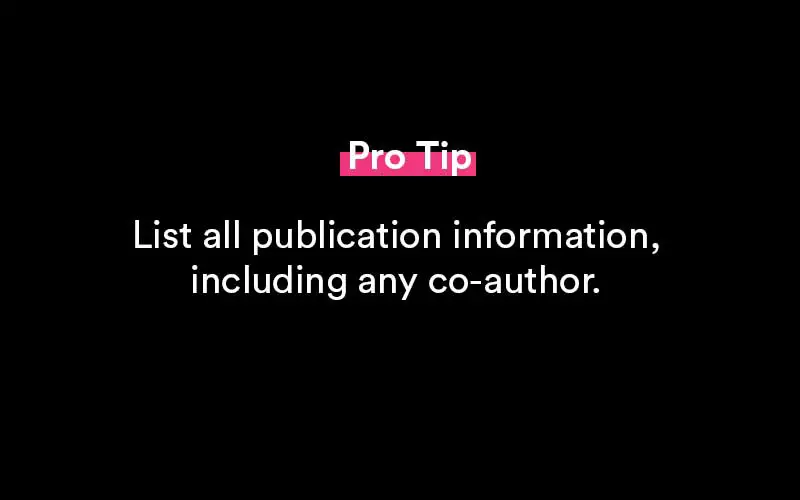
MLA is generally best for fields that fall into the humanities and literature categories. Professional affiliations related to fields like language, history, or philosophy would fall into this category.
In contrast, APA style is reserved for business, engineering, and science fields. Science and engineering fields specifically look for this style.
You will find this most relatable to a scientific or academic resume.
Use reverse chronological order
As you create your own section for publications, you should plan to list them in reverse chronological order.
This means you will list the most recent publications on your resume first and then work backward until you reach the oldest publications.
It does not matter if you are listing industry journal publications, mixed with academic publishing, mixed with international journal publications on your resume.
You should not categorize into sections but rather simply list publications from most recent to least recent in the proper citation format.
Leave off outdated publications
Most resume experts would tell you that if you have written publications that are outdated or perhaps no longer relevant, you should omit them.
You may always be proud of that work but there comes a time when it is no longer feasible to be listing publications that are irrelevant.
Unfortunately, it's impossible to put a number of years for publications on a resume.
You should consider whether the content is outdated or perhaps irrelevant in the field and this may help you determine whether you should list publications that are older and potentially outdated.
Include pending published work
If you have work that is pending and perhaps not yet published, you should list publications of this regard as well.
Perhaps your publication is still in the process of being peer-reviewed or even accepted. You should still share these works.
While they won't guarantee job interviews, knowing that you are continuing to work and publish shows that you have a drive to continue to grow and achieve things.
Resume example listing publications
Let's take a look at an example for listing publications on a resume.
Here is a simple example of an academic resume using generic names and titles.
Include the following:
- Author's name in an appropriate format.
- Article or journal title.
- Appropriate journal or volume detail, dates, and page numbers.
Publications on a resume is typically a bit more general and simple than that of a CV.
You don't necessarily have to worry so much about citational formatting for publications on a resume as opposed to a CV.
Be sure to put the pertinent details there but you may not need an extravagant space for listing them.
For example, peer-reviewed work should have its own section. If you have just one article to share, just list it in your education section.
Use MLA or APA to the best of your ability.
Don't forget to list pending work as in press.
CV example listing publications
If you are using a CV rather than listing publications on a resume, you might find that they are organized slightly differently overall.
Remember that how you list things or cite these publications on a resume will depend on the format that you are using for citation purposes.
Example:
Doe, John. How to Write a Resume. The Art of Writing Resumes. Volume 3 2017. Website or page numbers.
There are some citation generators out there that you can use. Maybe you're citing works in the Denver Nature Journal.
You do have to be cautious when using generators though as they are not always 100% accurate.
Using proper citation is far more important on a CV. You also need to have a full workup, which will include other sections apart from just your works.
Similar resources
- Sales Skills
- Functional Resume
- Interpersonal Skills
- Resume Format
- Volunteer Work on Resume
- How to List References on a Resume
- What is a CV?
- Resume Summary Examples
- Language Proficiency Levels
- Professional Background
- How to Pout Shadowing on a Resume
- Job Hunting
- How Far Back Should a Resume Go
- How to List Publications on Resume
- Skills List for the Resume
Popular Resources

Featured
35+ Phone Interview Questions & Best Sample Answers
Phone interviews have become a core part of the process when attempting to find a secured placement for an open position. Companies receive massive responses from potential candidates for any..

Featured
12+ Best Questions To Ask A Recruiter
Concerning a job search, you might receive numerous offers from your recruiters. Before you choose one, you need to assess all the conditions, for which it is vital that you know everything associated with the offered position..

Featured
Answering "What Makes You Unique" In A Job Interview
Answering this question during a job interview requires more than knowing why you are unique as an individual. Yes, the true scientific answer is made up of two main components: your..

Featured
250+ Ice Breaker Questions for Life
An ice breaker question is a question that’s asked from one person to another person in order to act as a conversation starter. It brings a connection...

Featured
10 Best Answers to "What Motivates You?"
Open-ended questions like “What motivates you?” can elicit a deer-in-the-headlights reaction from job candidates if they are unprepared. It’s a broad question and can leave the interviewer..

Featured
Answering "How Did You Hear About This Position" In An Interview
A lot of interviewers ask this question - how did you hear about this position? This way they can judge you if you are a passive or an active job seeker..

Featured
8 Best Thank You Emails After an Interview (Samples, Free Templates)
Writing a thank you note after an interview says a lot about you as a potential employee. Most notably, it says that you care about the opportunities presented..

Featured
Writing a Resignation Letter (How To Write It, Samples)
Writing the perfect letter of resignation is more of an art than it is a science. And we’re going to cover how to master that art form in this full guide..

Featured
How to End a Letter (Example Salutations, Sign Off's)
Knowing how to end a business note or email is an important skill to develop. It helps portray a sense of confidence, respect and tone to your message..
